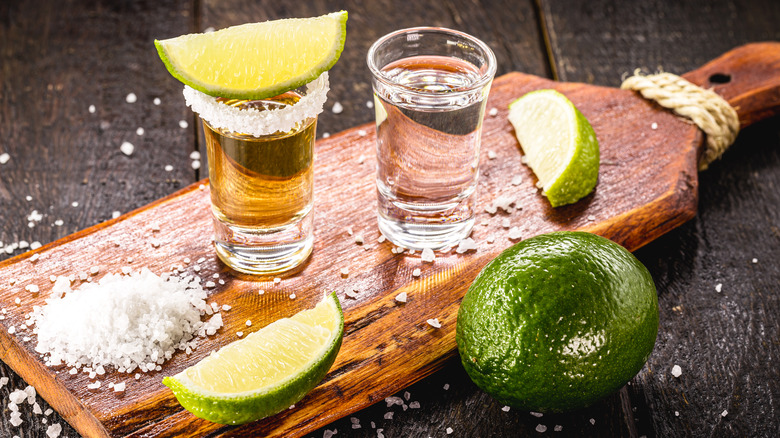How Geography Affects The Flavor Of Tequila
Tequila is having a moment right now. From sipping tequila to enjoying craft cocktails, the rising spirit is raising spirits everywhere. Liquor.com even lauds tequila as "the current darling of the spirits world." And now it seems that tequila is not just for margaritas anymore.
Tequila got its start in Jalisco, a state located in Western Mexico when Spanish explorers began distilling the indigenous agave plant (per Serious Eats). This was then turned into mezcal, tequila's predecessor. Agave is a succulent-like plant that stores water in its leaves, states Britannica, mostly grows in Mexico, and can also be found in parts of the Southwestern U.S. and the Caribbean. But even though there are over 166 different types of agave plants (per Decanter), you can only distill tequila from the Blue Weber (which is found in Jalisco).
In fact, tequila is actually a type of mezcal grown from agave orchards (called "potreros") around the town of Tequila in Mexico. Unless it's made in one of only five specific regions — Jalisco, Guanajuato, Michoacan, Tamaulipas, or Nayarit, via Food Network – it isn't tequila. The geographical origin of your tequila affects its flavor, too, and here's how.
Elevation affects your añejo
Elevation makes a big difference — and it's all about the piña (but if you like piña coladas and getting caught in the rain, don't get too excited just yet). The "piña" is the tall center of the Blue Weber agave plant, and it varies in size from region to region, via Serious Eats. In the Highlands of Jalisco (at 6,000 feet above sea level, per Wine Enthusiast), agave plants are the biggest and sweetest, with, per Serious Eats, piñas weighing in between 90-125 kilograms. Lowland agave plants (grown at 3,800 feet) are smaller and earthier, with 60-80 kilogram piñas.
For instance, Don Julio 1942 is made in the Highlands and tastes like oak and vanilla. On the other hand, Partida Tequila, according to A Bar Above, is made in the Lowlands (aka the "Valley") and features notes of anise, quince, maple, and vanilla — and that's just within the region of Jalisco. Guanajuato-made Los Arango has a green, herbaceous flavor. Plus, while all tequila is made with Blue Weber agave, other ingredients can dampen its purity. Some tequilas (like Espolón and Milagro) boast 100% blue agave contents, but technical regulations only require tequilas to contain 51% blue agave, per Wine Enthusiast. The rest is usually cut with another neutral liquor or added sugar. Highlands or lowlands-made, this can significantly affect both flavor and quality — be sure to check out the ingredients before you bring a bottle home.

